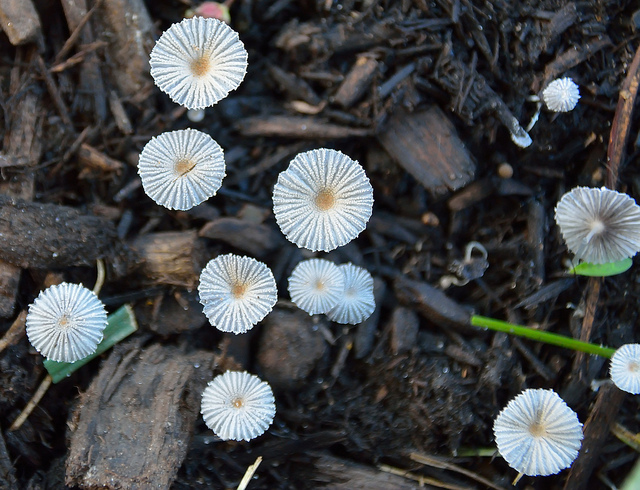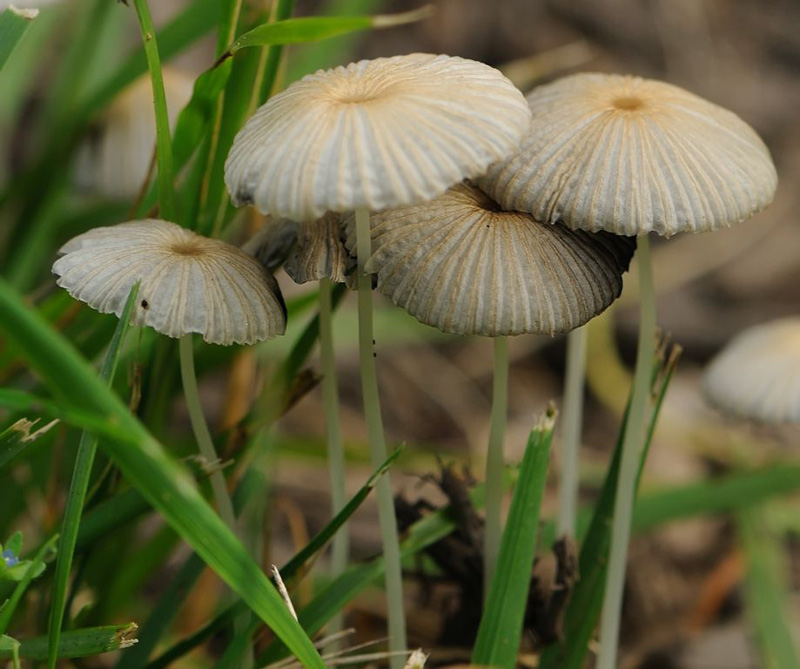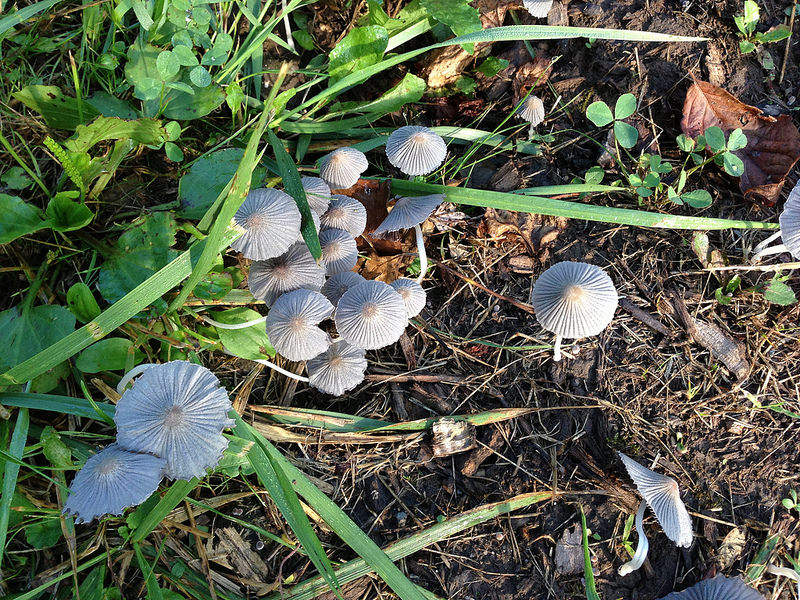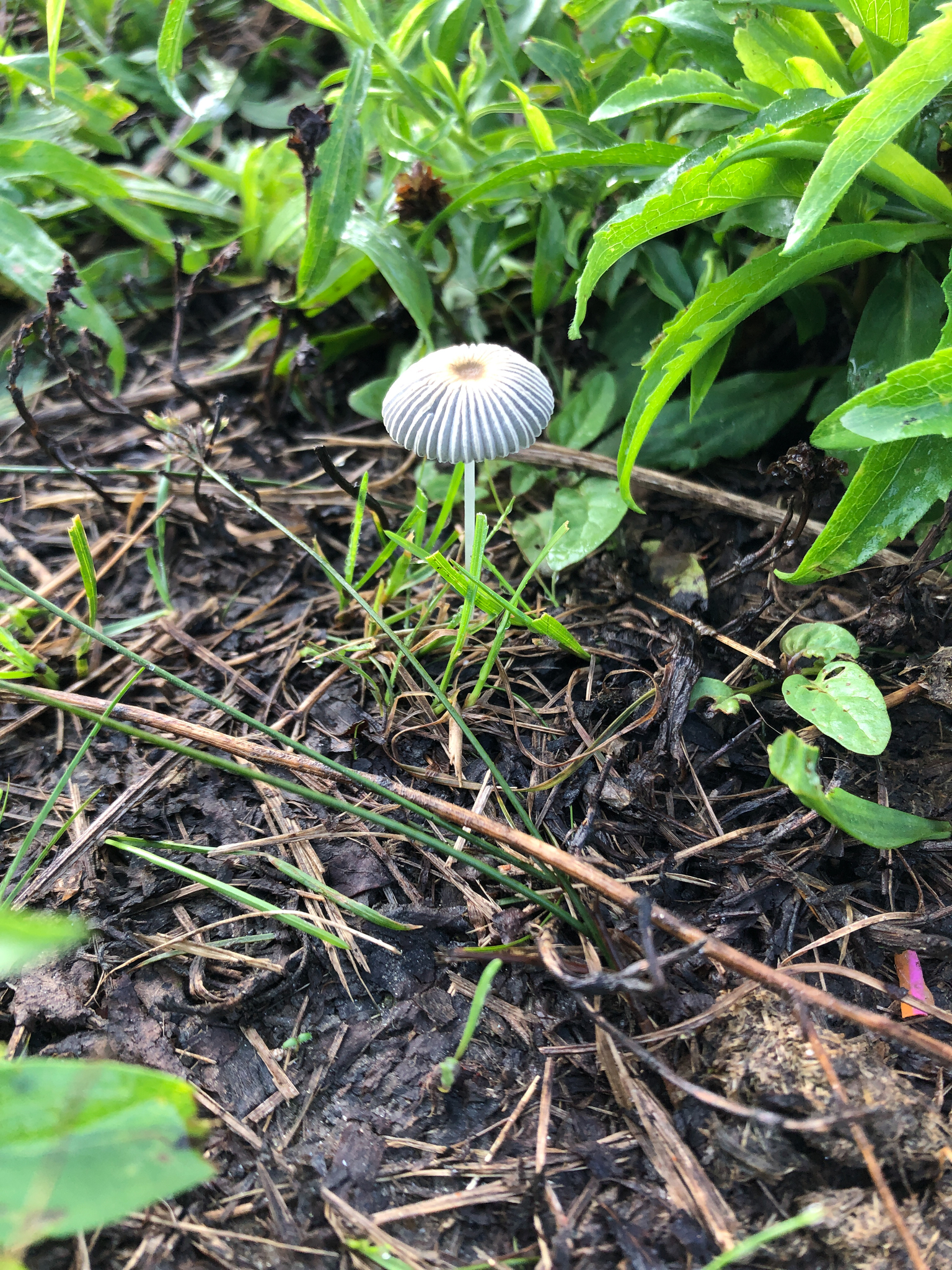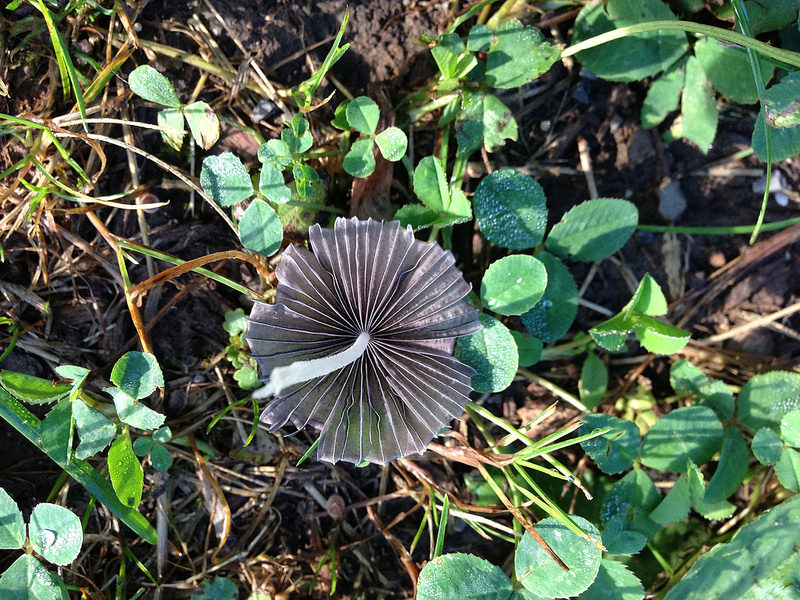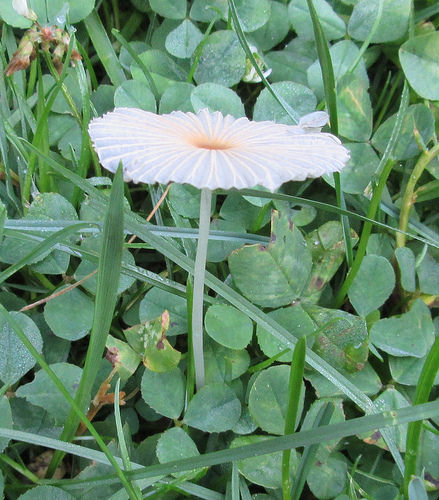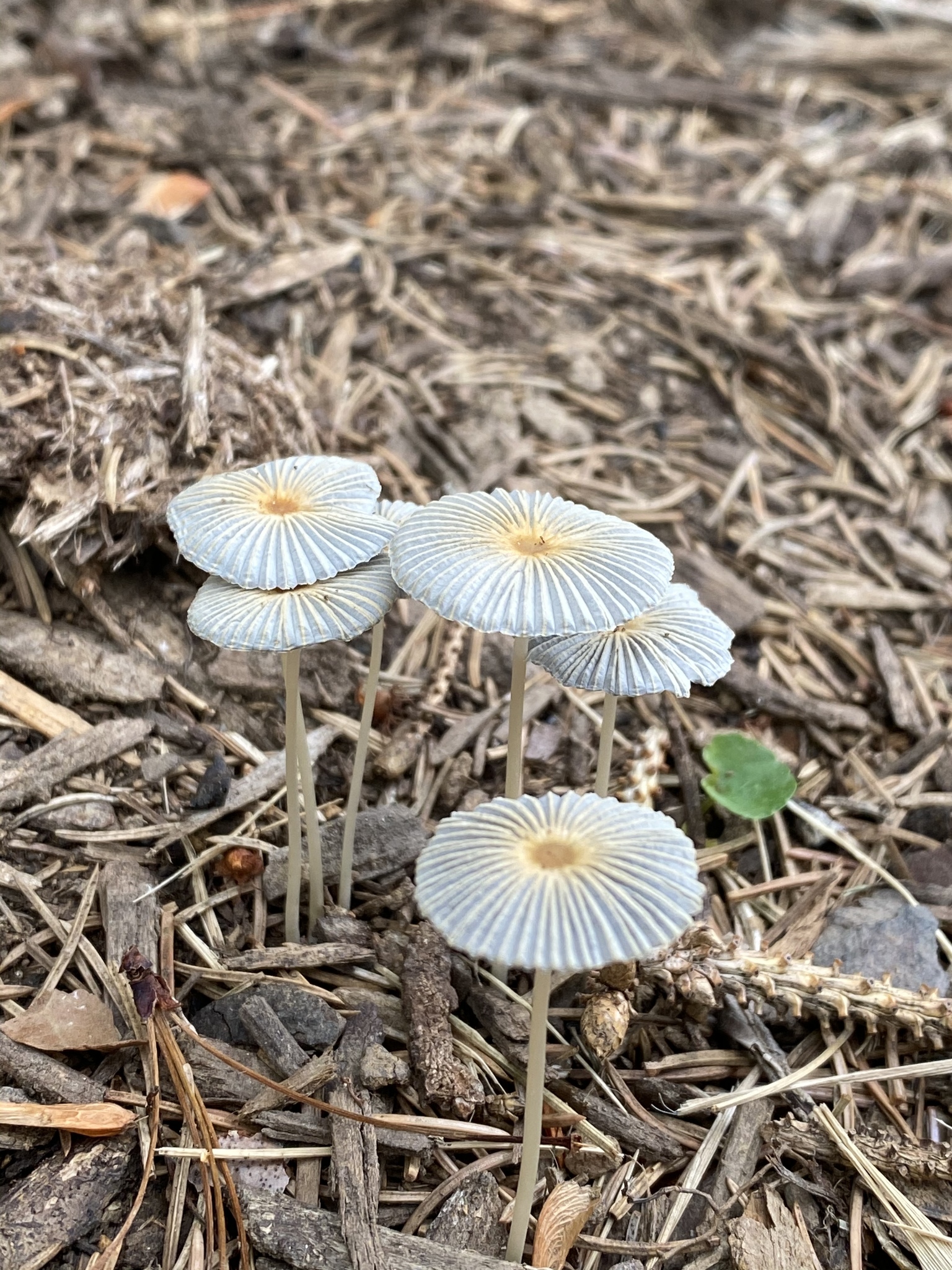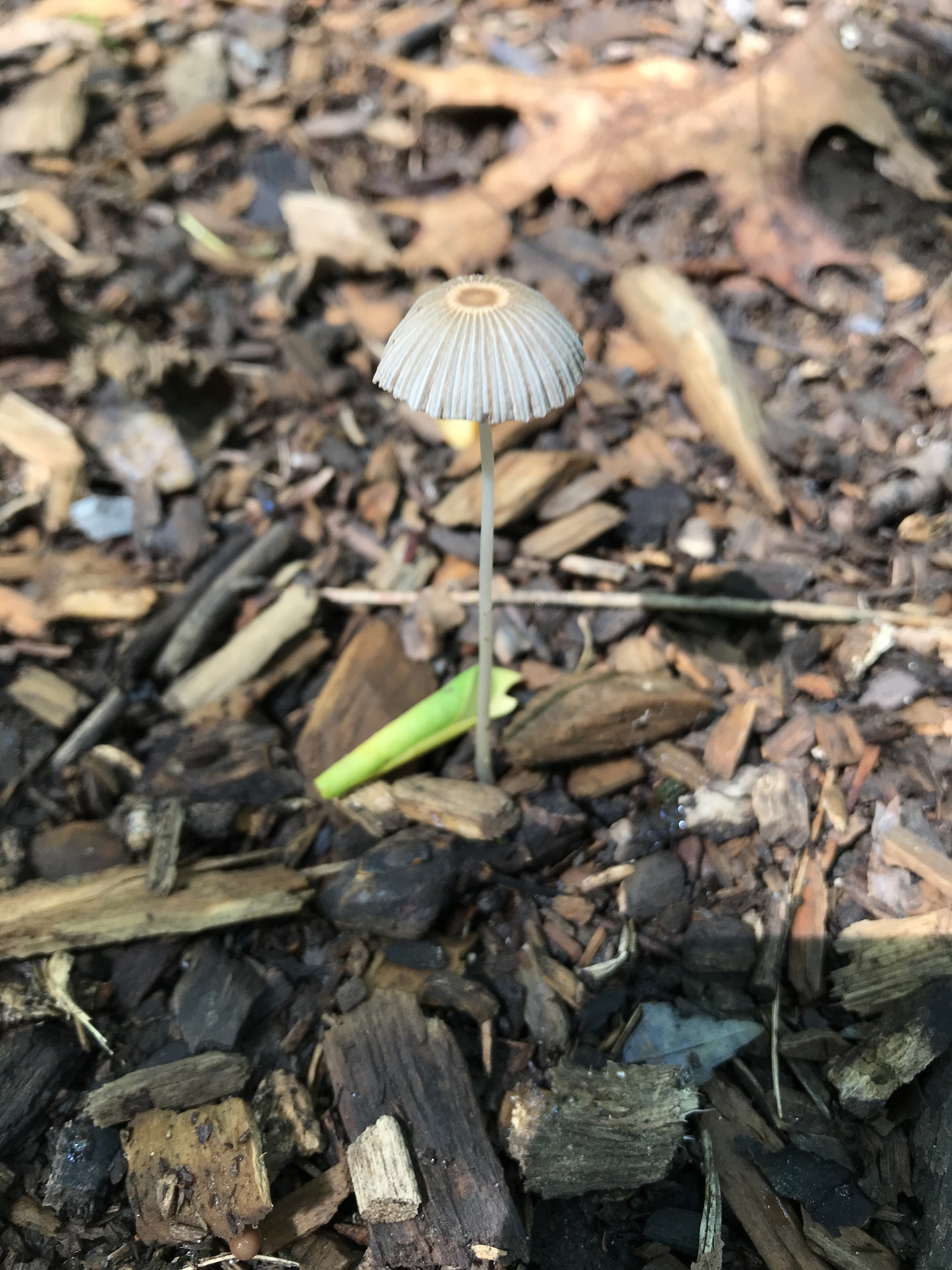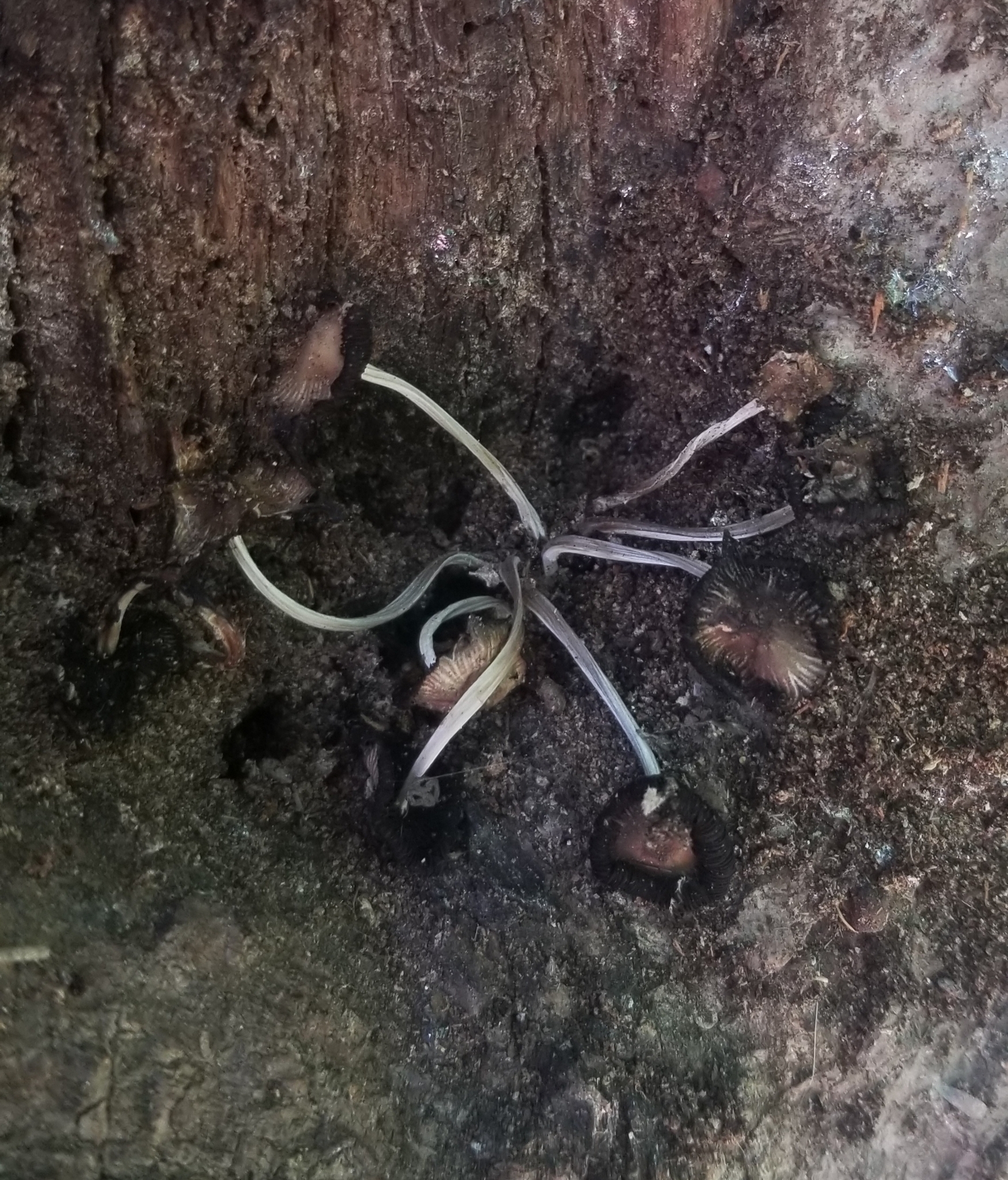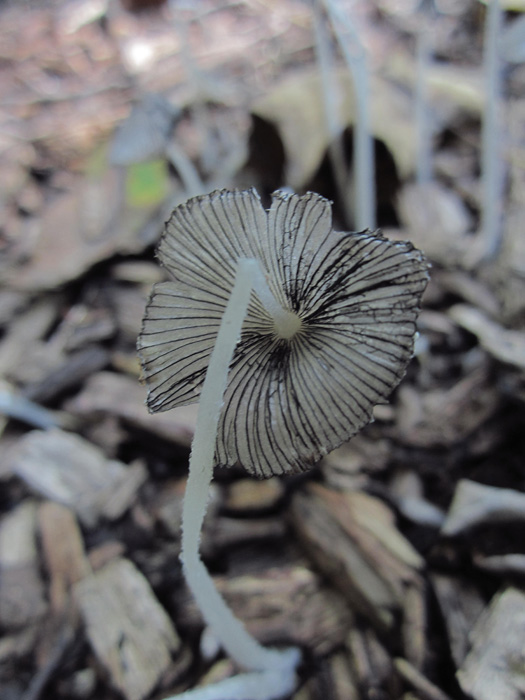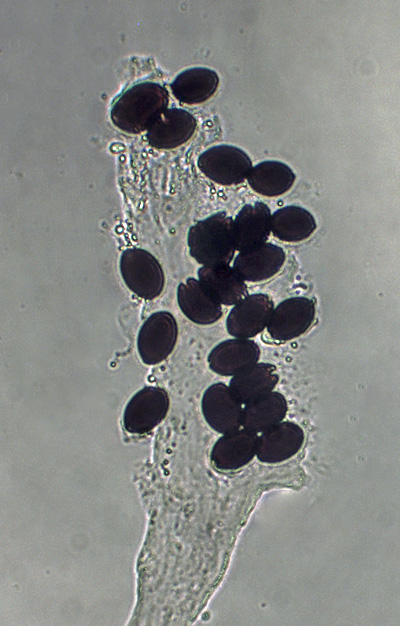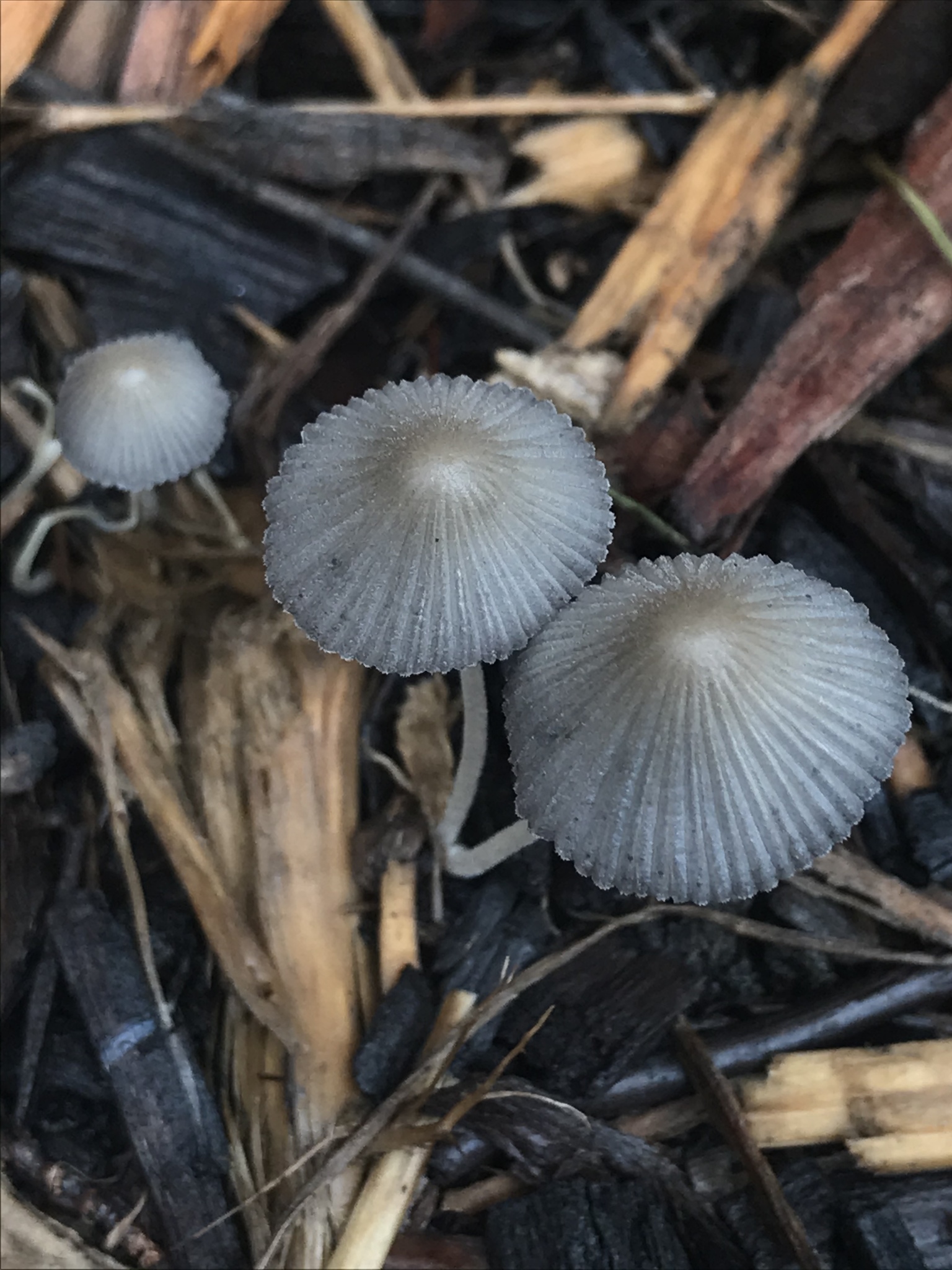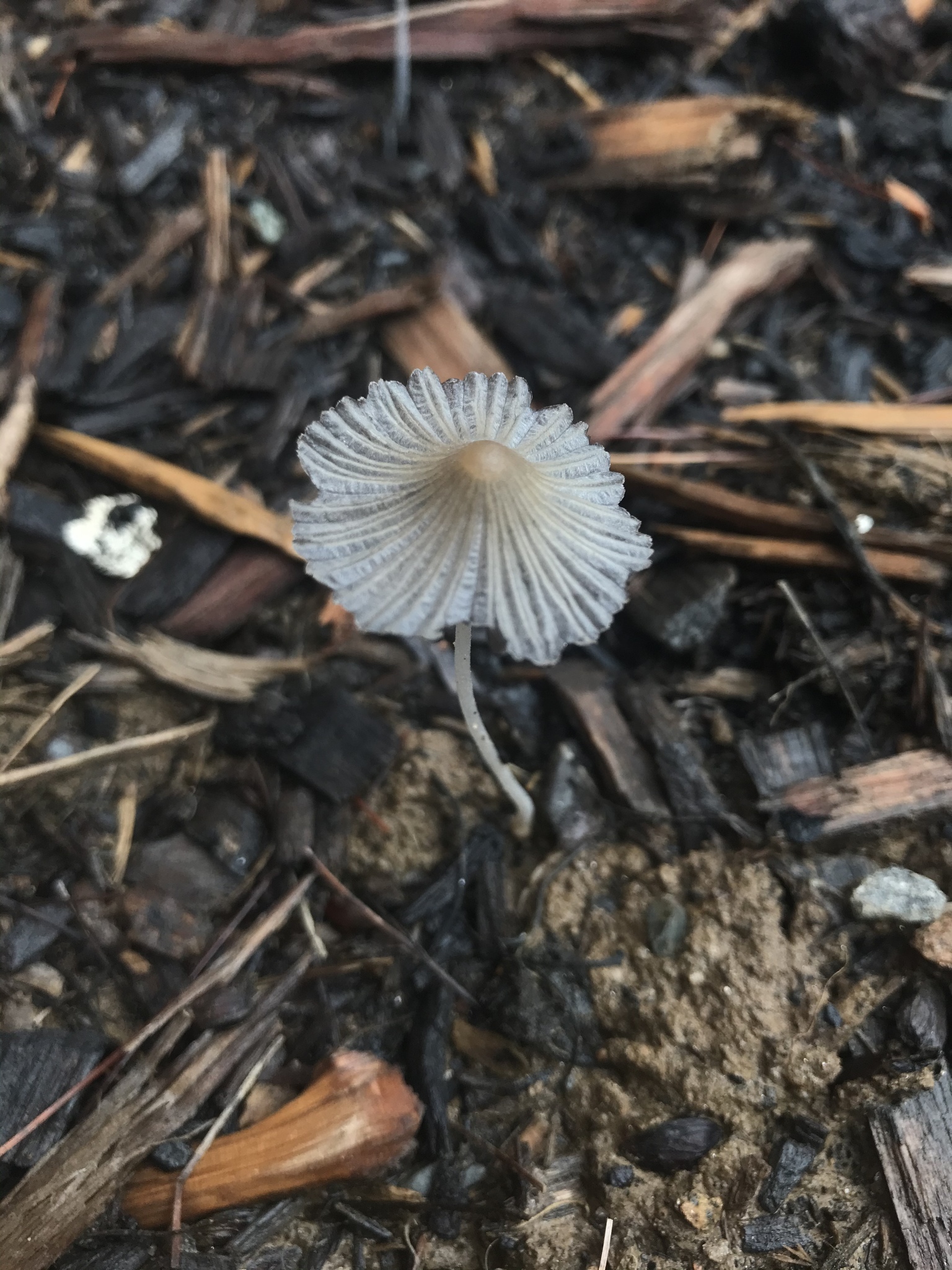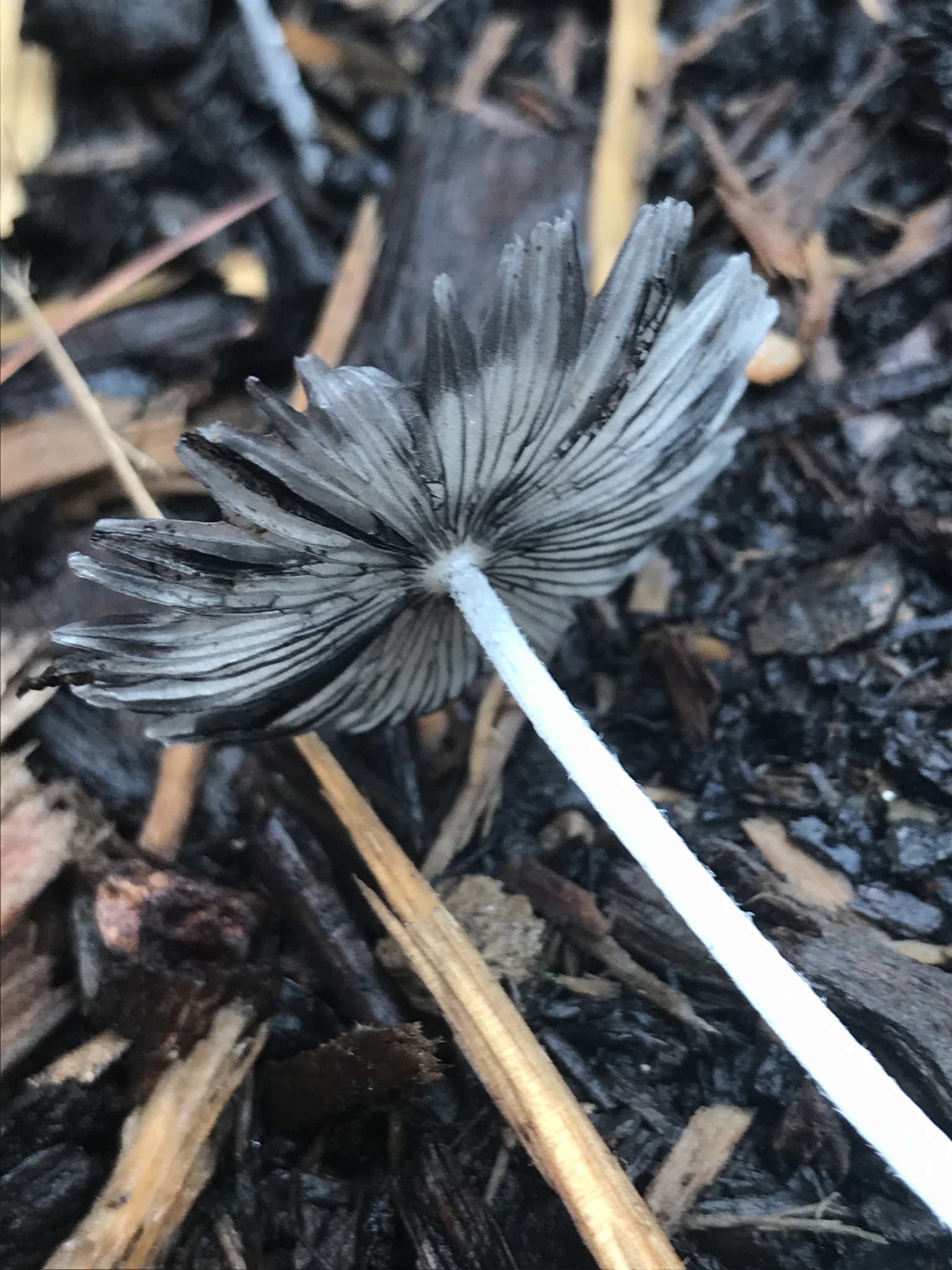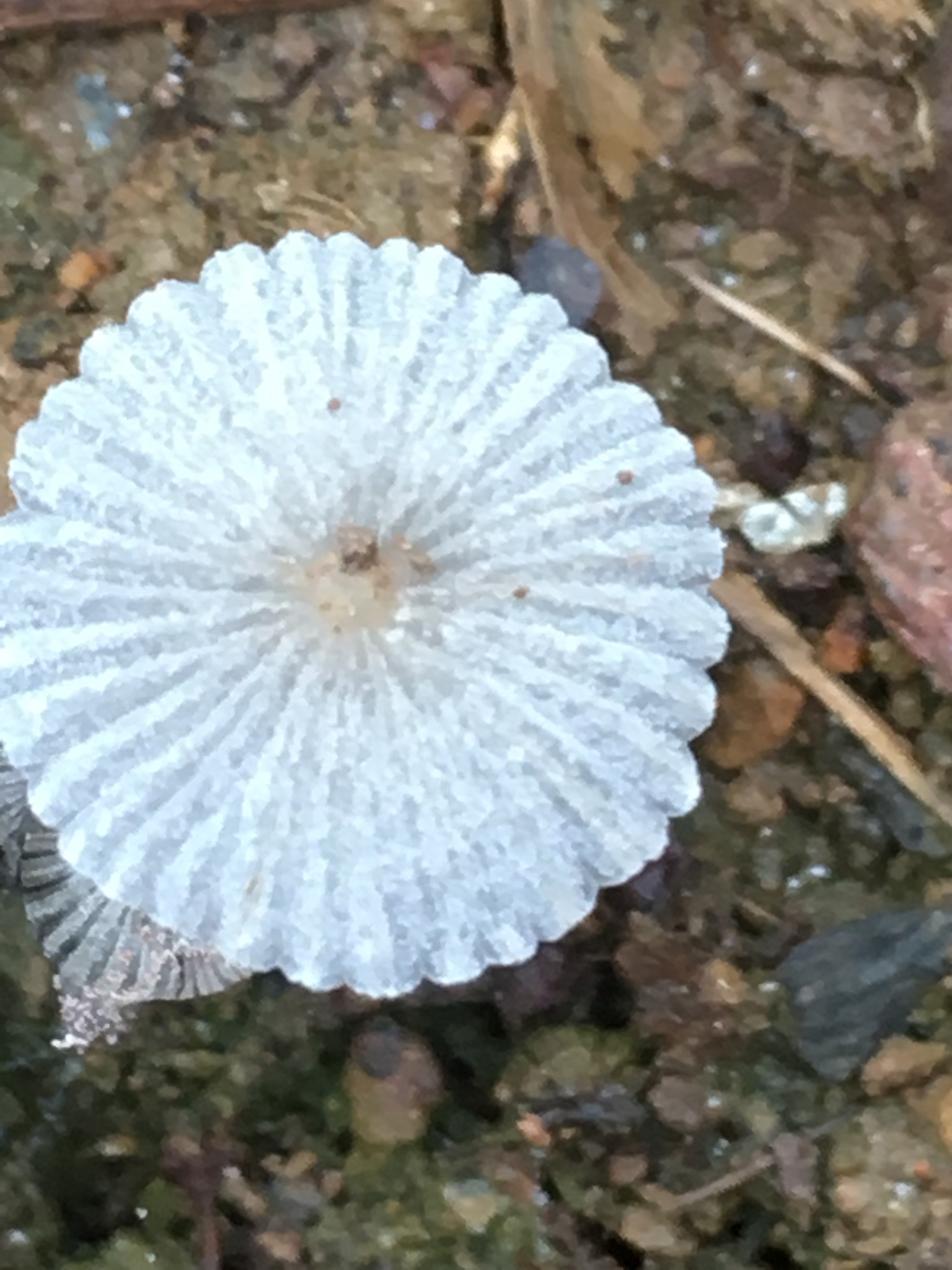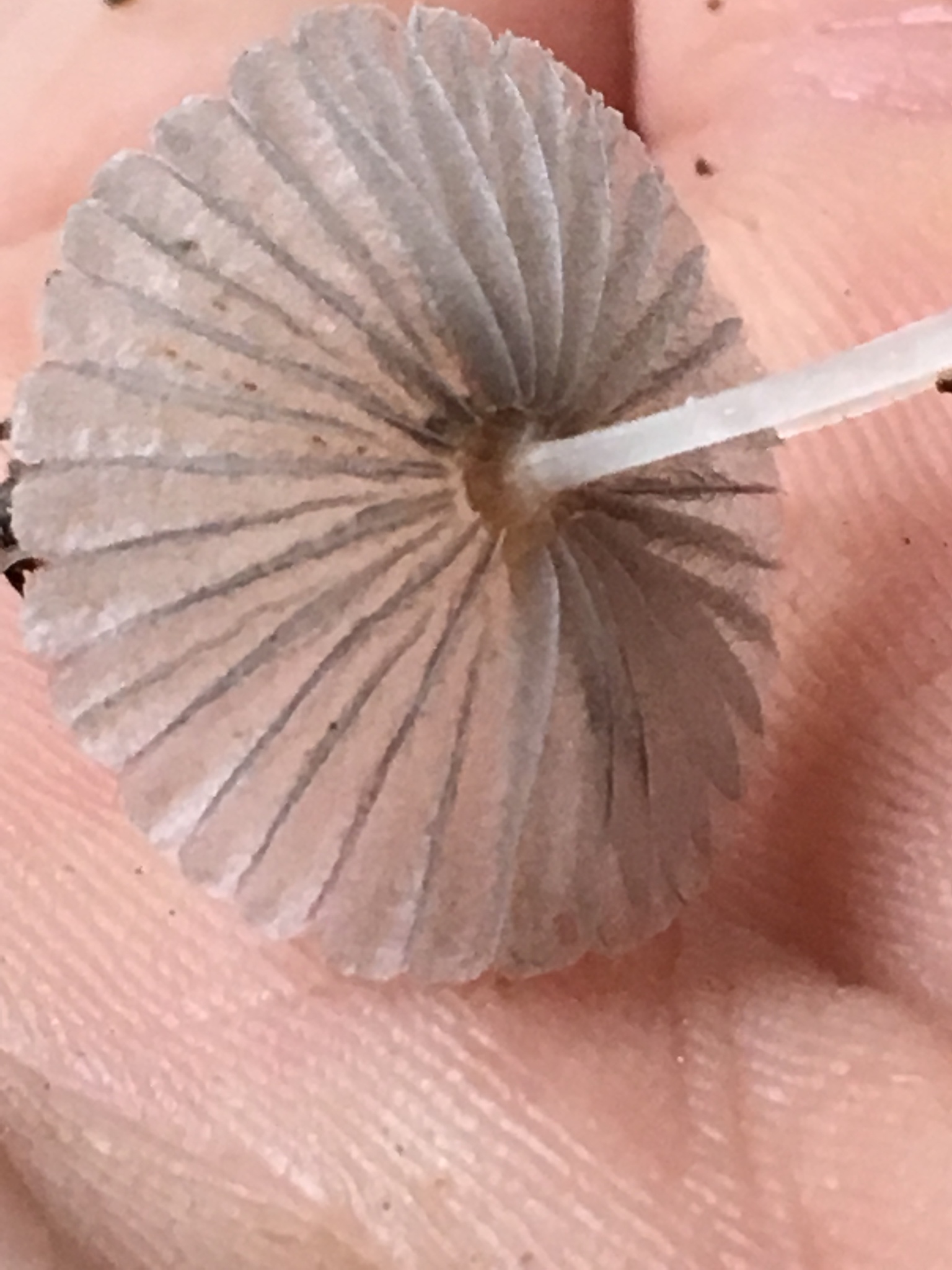Map Snapshot











51 Records
Status
Usually found in groups on lawns, fields, and mulched areas.
Description
Cap: Up to 1" gray/brown, deeply grooved, broadly convex to nearly flat, disc depressed in age; flesh grayish, thin. Gills: Grayish, then black, moderately distant, brittle. Stalk: White/transparent, thin, long (may be almost 3"), slightly enlarged base, hollow in age. Whole fruiting body fragile and ephemeral. Appears overnight in wet weather and usually has collapsed by noon. (J. Solem, pers. comm.)
Seasonality Snapshot
Source: Wikipedia
| Pleated inkcap | |
|---|---|

| |
| Scientific classification | |
| Domain: | Eukaryota |
| Kingdom: | Fungi |
| Division: | Basidiomycota |
| Class: | Agaricomycetes |
| Order: | Agaricales |
| Family: | Psathyrellaceae |
| Genus: | Parasola |
| Species: | P. plicatilis
|
| Binomial name | |
| Parasola plicatilis (Curtis) Redhead et al.
| |
| Parasola plicatilis | |
|---|---|
| Gills on hymenium | |
| Cap is convex or depressed | |
| Hymenium is free | |
| Stipe is bare | |
| Spore print is black | |
| Ecology is saprotrophic | |
| Edibility is inedible | |
Parasola plicatilis, commonly known as the pleated inkcap,[1] is a small saprotrophic mushroom with a plicate cap (diameter up to 35 mm). It is a widely distributed species in Europe and North America.[2] This ink cap species is a decomposer which can be found in grassy areas, alone, scattered or in small groups.[3] The fruiting bodies grow at night after rain, and will self decompose after spore dispersion is achieved. Otherwise, they are quickly dried up in morning sunlight, or will eventually collapse beneath the weight of their caps. Though nonpoisonous,[4] the species is generally regarded as inedible.[5]
The overall body resembles a cocktail umbrella. The cap is papery, and the species has no veil.[3] Two similar species, P. hemerobia and P. leiocephala, have similar microscopic features but appear in different habitats and have unique spores.[3]
References
[edit]- ^ "Pleated Inkcap | NatureSpot". Retrieved 2023-08-20.
- ^ "Parasola plicatilis (MushroomExpert.Com)". Retrieved 2023-08-20.
- ^ a b c Trudell, Steve; Ammirati, Joe (2009). Mushrooms of the Pacific Northwest. Timber Press Field Guides. Portland, OR: Timber Press. p. 199. ISBN 978-0-88192-935-5.
- ^ Miller Jr., Orson K.; Miller, Hope H. (2006). North American Mushrooms: A Field Guide to Edible and Inedible Fungi. Guilford, CN: FalconGuide. p. 228. ISBN 978-0-7627-3109-1.
- ^ "Parasola plicatilis, Pleated Inkcap mushroom". Retrieved 2023-08-20.
External links
[edit] Media related to Parasola plicatilis at Wikimedia Commons
Media related to Parasola plicatilis at Wikimedia Commons
